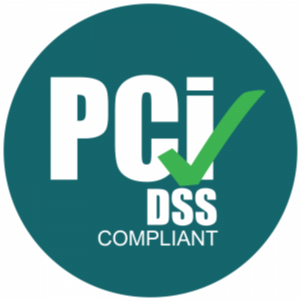Terry was incredibly excited about a new blender they had ordered. Unfortunately, it arrived broken. A little disheartened, Terry called customer support only to get a quick apology followed by hold music as the customer support executive roped in the manager to give Terry a full refund.
What was wrong with this scenario? Simply speaking, it just didn’t stand out. Had the executive immediately been able to organize a refund or replacement, with a small discount coupon for Terry’s next purchase, not only would the company have won a loyal customer, but they would’ve gained a promoter!
That’s the difference employee empowerment can make! It gives employees the autonomy to make decisions that benefit the customer without having to jump through hoops. However, employee empowerment isn’t something that can just be done overnight. It requires a cultural shift within your organization.
What does employee empowerment really mean?
Employee empowerment is like giving every team member their own controller to play the game instead of just watching the boss play. It allows your team to make their own moves and contribute to winning in a real, tangible way.
By providing employees with the tools, trust, and freedom to make decisions and take action, you empower them to have a genuine impact on the outcomes. This, in turn, increases your employees’ sense of ownership and investment in the success of your organization.
Empowerment vs. Engagement vs. Autonomy
While employee empowerment, engagement, and autonomy sound similar, they are each distinct aspects of the employee experience and work together to create a powerful work culture.
Employee Empowerment is when employees are trusted to set and achieve success metrics and are given the tools to achieve these in their own way. This allows employees to take ownership of their tasks and the freedom to decide their action without too much oversight.
Employee Autonomy is when employees are given the freedom to decide how to achieve their goals without being micromanaged. Employees can decide the path they take and make decisions that might benefit their ultimate goal, but the results ultimately need to be good, leaving lesser room for error.
Employee Engagement is when employees want to show up for work each day. They are emotionally invested in the progress of the organization and are therefore more passionate about the outcomes.
While empowerment gives employees the trust and tools to achieve a task, it’s autonomy that allows them to do the tasks in their way, and engagement leads them to bring their passion and energy to work each day. All three aspects work together to create a culture of happy, motivated, and proactive employees.
The power of empowerment
Employees are the face of your company when communicating with customers, they are the ones that implement strategies and have a deep understanding of customer sentiments. But in order to leverage these insights, and make employees your biggest assets, you need to begin with employee empowerment. The benefits are endless, but here’s a quick list of what employee empowerment can do:
1. Boost innovation
There is no one path to success, and who can demonstrate this better than empowered employees? When employees are free to define their own strategies and take real action as they see fit, they will look for creative ways to solve problems, often finding more efficient and even more effective solutions. Moreover, this sense of ownership also leads to employees being more invested in the success of the organization. This leads to innovation as they look for creative ways to propel success.
Empowerment impact: Google implemented a 20% policy, essentially giving employees 20% of their time to dedicate to a project they are passionate about. This is time with little oversight where employees can explore ideas and experiment. This has led to the development of Google’s most iconic products such as Gmail, Google AdSense, and more!
2. Improve retention
Empowered employees aren’t just looking to achieve more for the organization, they are also fiercely loyal. After all, empowerment can increase employee engagement rates and create a positive workplace.
Empowerment impact: According to a LinkedIn study, empowered employees are 34% more likely to stay with a company for three years compared to employees working at a company that provides less autonomy and empowerment.
3. Enhance customer satisfaction
Employee empowerment is all about giving the tools employees need to achieve their goals and ensure success in their way. This allows employees to take action and make an impact without having to jump through hoops to make things happen. It’s especially valuable in customer support and hospitality where immediate action can make a significant impact.
Empowerment impact: Ritz-Carlton is considered the gold standard when it comes to customer service, and they make this happen with employee empowerment! Employees are authorized to spend $2000 to make customers happy without the need for a manager’s approval. What this means is, you will have employees willing to go the extra mile and work to truly ensure customer satisfaction, because they actually can!
4. Increase productivity
When employees are passionate, they are also more likely to be more creative, innovative, and most importantly, productive! They are striving for success, because they aren’t just looking to tick off their tasks for the day, they are looking to make a difference.
Empowerment impact: A study by Zenger Folkman discovered that only 4% of employees are willing to put in that extra effort when empowerment is low, compared to 67% of employees who go the extra mile when empowerment is high.
5. Ensures engagement
When employees feel trusted and valued, they are more likely to be emotionally invested in the organization. They collaborate better, are more inclined to taking risks, innovating, and are passionate about their work.
Empowerment in action: A study by Joe Folkman revealed that of the employees who experienced low levels of empowerment, only 24% appeared engaged, whereas 79% employees were engaged when they saw high levels of empowerment.
Building the foundation for employee empowerment
In a highly competitive market, employee empowerment can be the key to success. Instead of focusing on top-down organizational structures where goals and processes are determined solely by the leadership team, including employees in the process can be the game changer you need.
After all, your employees are aware of on-ground sentiments, from common customer complaints and preferences to evolving buying patterns. By empowering employees to innovate, act, and lead success, you can create a business that doesn’t just survive but thrives.
However, employee empowerment isn’t just about handing over the reins without any consequences. Instead, you need to create a foundation for responsible empowerment.
Here are some things that can help:
1. Defining roles and responsibilities
Do your employees know what their goals are? Create realistic targets for them to work towards, so they can focus on how to get there. Be clear and concise, making sure your employees know exactly what is expected of them.
2. Offering tools and resources
Do your employees have the tools they need to achieve their goals? It’s important to check in with them to better understand their key hurdles and the tools and resources they will need to succeed.
3. Allowing decision-making
How much power do your employees really have? Make sure they feel comfortable taking decisions that could help them achieve their goals rather than waiting around for a go-ahead from above. The lesser hierarchical hurdles they have in their path, the more empowered and driven they will be.
4. Implementing continuous feedback loops
Do your employees need additional support? What obstacles are they facing? Continuous feedback loops allow you to monitor progress and respond early to ensure your people have everything they need.
5. Creating a recognition and rewards system
Your people are doing great work, but do they feel appreciated? By creating a rewards and recognition program, you can positively reinforce their hard work, uplift morale, and nurture a productive work atmosphere.
5 proven strategies for empowering your employees
Empowerment doesn’t happen by chance. It requires deliberate action, a clear framework, and a culture that prioritizes trust and autonomy. Once you have the foundation in place, it’s important to take it a step forward. So, here are five high-impact strategies that allow leaders to unlock their team’s full potential and turn empowerment from a buzzword into a business advantage:
1. Include employees in goal-setting
Rather than creating goals and passing them down to employees, include them in the process. Co-created goals foster a sense of ownership, increase motivation, and ensure alignment between the individual and the organization. When creating goals, use the SMART framework to make sure the goals are clear and actionable.
2. Invest in upskilling
Empowerment starts with capability. That’s why it’s important to provide employees with access to training, mentorship, and upskilling opportunities that help them grow their skillset. Sogolytics helps you capture feedback and identify skill gaps so you can tailor professional development opportunities based on each employee’s needs. When employees see you investing in their growth, they are more likely to invest in your mission.
3. Create safe spaces for risks and failures
Innovation just doesn’t go hand-in-hand with fear. That’s why it’s important to encourage employees to take risks and create a safe space in case of failures. After all, the biggest successes are normally preceded by trial and error. When you treat mistakes like learning opportunities, employees feel comfortable taking calculated risks.
4. Promote cross-functional collaboration
Employees who work beyond the scope of their jobs are often better able to tackle unexpected circumstances and innovate solutions across teams. That’s why it’s important to create opportunities for cross-functional collaboration. With Sogolytics, you can ask employees about their interest areas and facilitate opportunities that reflect their preferences!
5. Support flexible work arrangements
Everyone has different work styles. While it’s useful to have structure, it’s also important to accommodate differing work styles to promote autonomy and improve productivity. What’s more, allowing employees to work in their own way also builds trust!
Measure empowerment success
You’ve got the processes in place, and with continuous feedback loops you are listening in on employee sentiments and perceptions too. But how can you definitively measure the success of your empowerment strategies?
Here’s where key metrics come into play! By tracking key metrics, you can get a clear perception of the impact of your strategies on employee productivity and take early action. Here are some of the metrics you need to keep in mind:
1. Employee Net Promoter Score (eNPS)
You ask customers how likely they are to recommend you to their friends and family, but what about your employees? The employee net promoter score reveals just how happy your employees are, unveiling prevailing sentiments and alerting you to early signs of dissatisfaction and churn! You can add the eNPS question in your regular pulse surveys or just ask employees from time to time to get an idea of overall perceptions and understand the effectiveness of new strategies on employee sentiments.
2. Retention rate
Numbers don’t lie. So, if you’re looking to truly understand how happy your employees are, simply look at your employee retention rate! Happy employees don’t leave as often, instead showing a strong sense of loyalty and investment in the success of the organization.
3. Employee satisfaction surveys
When you’re looking for answers, just ask! Employee satisfaction surveys are a great way to assess how your employees are feeling about the changing workspace dynamic and get their insights into how empowerment can be improved.
Empowerment tools: supporting success
The right tools make it easy for your employees to do their best work. So, here’s a list of the kind of tools that will lay the foundation for an empowered and engaged workforce:
1. Feedback Solution
When your goal is empowerment, you need to listen in. What are your employees’ biggest concerns? What is the overarching sentiments? What makes your employees feel demotivated? Once you have the answers, you can create an empowerment strategy that is right for your organization.
That being said, no strategy is perfect, and creating a feedback loop allows you to keep improving and evolving your empowerment initiatives to keep up with employees’ needs and expectations.
Tools like Sogolytics help you stay connected to the employee pulse, ensuring you make informed decisions that benefit your organization.
2. Collaboration Tools
Make it easier for your employees to work together, innovate, and create solutions across teams with collaboration tools that help them connect. Tools like Slack and Teams can help employees brainstorm new ideas, create groups, forge friendships, and ultimately build a strong connection that reflects in their work. Plus, employees can also use tools like Asana and Trello to create workflows, manage tasks, and ensure every piece of the puzzle works perfectly together for a seamless execution.
3. Learning Management Systems
Not all empowerment tools are tangible. Sometimes it’s about giving employees the skills required to tackle a new task. However, you need to first identify skill gaps to direct them to the right courses and training programs for professional development. Look for LinkedIn learning courses as well as Coursera to help your employees up their game!
Now what?
Empowered employees don’t just do their job, they take ownership, innovate, and drive the business forward.
But if you’re looking forward to those great benefits, the big question to start with is this: How empowered are your employees now?
Get started by capturing the answers you need with Sogolytics! Need some help? Set up a free demo and discover the Sogolytics difference in building an engaging and empowering work culture!














